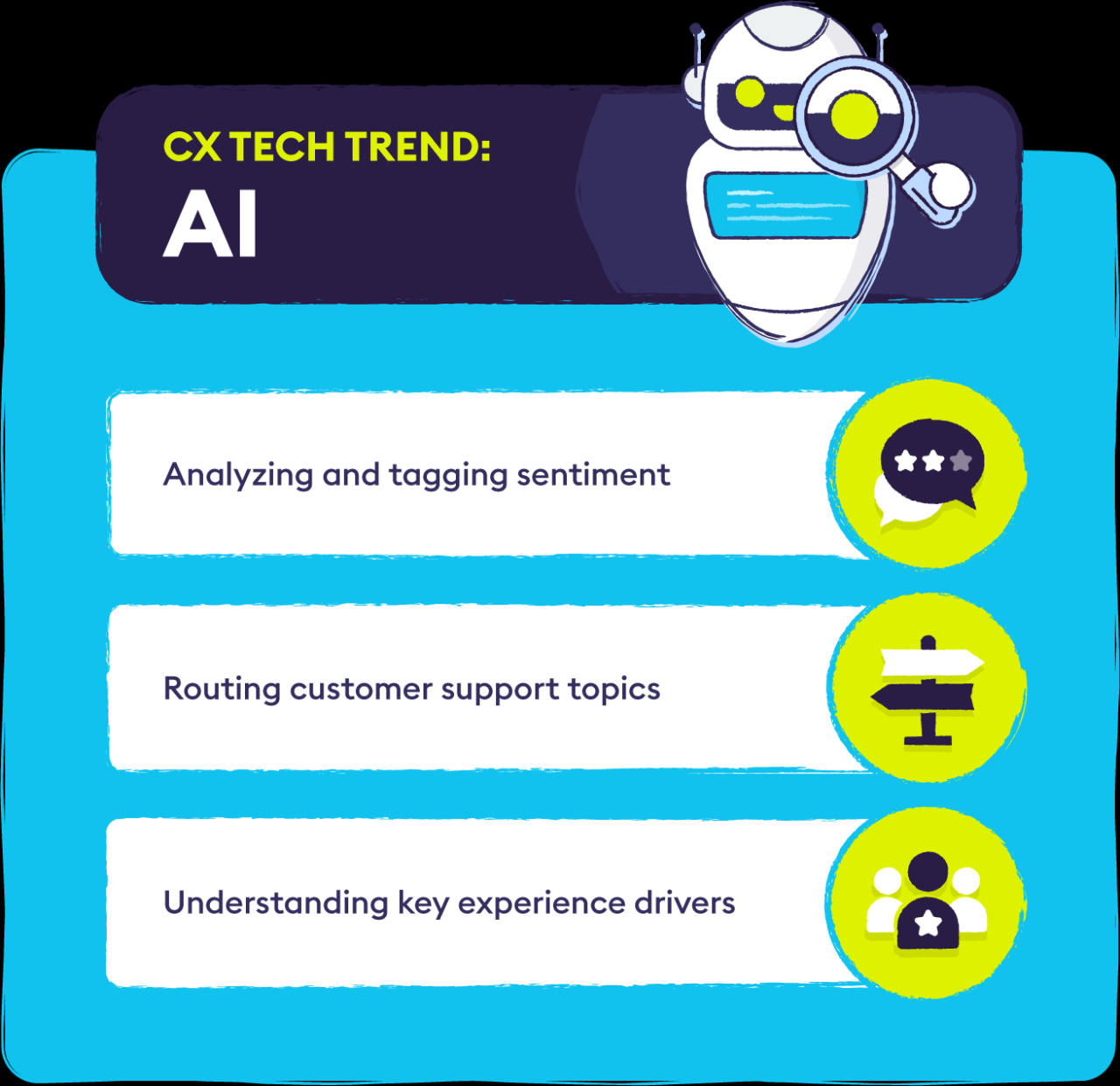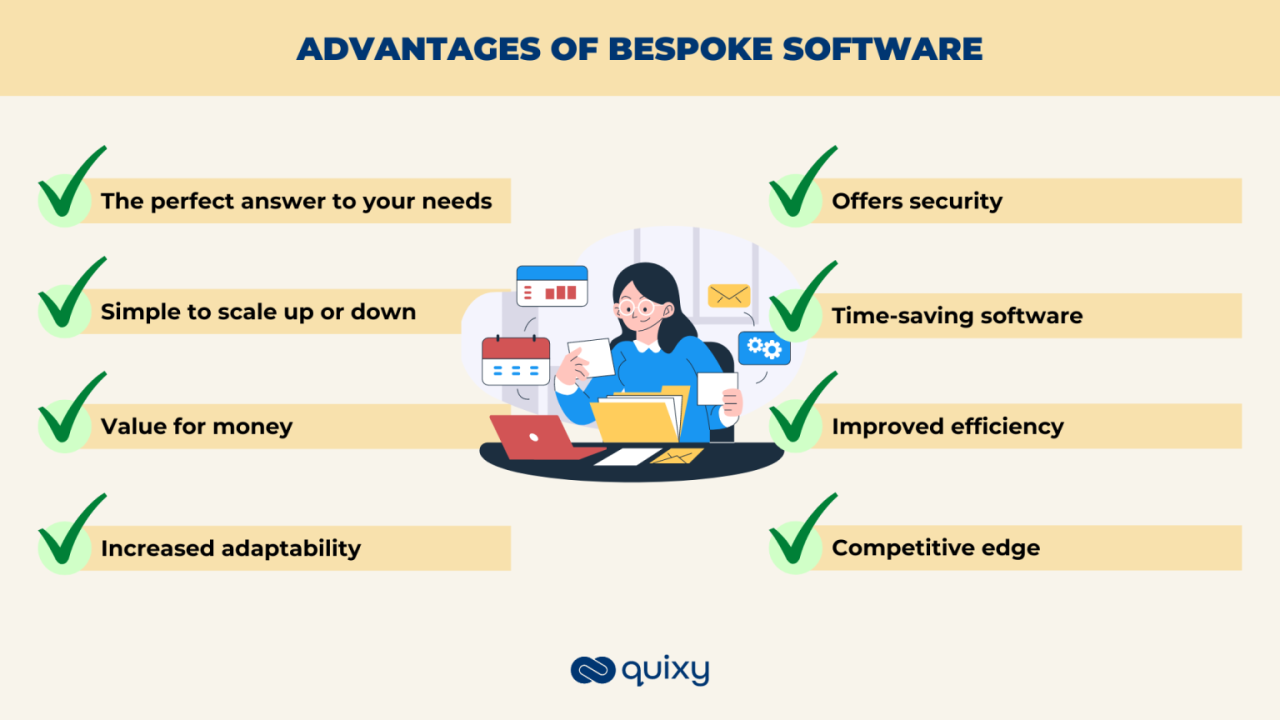What is CX Technology: Enhancing Customer Experiences
What is CX technology? It’s the key to unlocking exceptional customer experiences in today’s digital world. CX technology encompasses a range of tools and platforms designed to understand, engage, and […]

What is CX technology? It’s the key to unlocking exceptional customer experiences in today’s digital world. CX technology encompasses a range of tools and platforms designed to understand, engage, and delight customers at every touchpoint. From personalized recommendations to seamless support, CX technology empowers businesses to build lasting relationships and drive loyalty.
The evolution of CX technology has been driven by the ever-increasing demands of customers for personalized and intuitive experiences. Businesses are constantly seeking new ways to leverage data, automation, and artificial intelligence to create a seamless and enjoyable journey for their customers.
Defining CX Technology
CX technology, in its simplest form, encompasses the tools and platforms that businesses use to enhance the customer experience (CX). It’s about leveraging technology to understand customer needs, improve interactions, and ultimately, create a more positive and memorable experience.
Examples of CX Technology Tools and Platforms
CX technology encompasses a wide range of tools and platforms designed to optimize the customer journey. Here are some common examples:
- Customer Relationship Management (CRM) Systems: These platforms help businesses manage customer interactions, track customer data, and personalize communications. Examples include Salesforce, HubSpot, and Microsoft Dynamics 365.
- Live Chat and Messaging: Real-time communication channels like live chat and messaging apps enable businesses to provide instant support and answer customer questions. Popular options include Intercom, Drift, and Zendesk Chat.
- Knowledge Base and Help Desk Software: These platforms provide a centralized repository of information and resources, empowering customers to find answers to their questions independently. Examples include Zendesk, Freshdesk, and Help Scout.
- Customer Feedback and Survey Tools: Businesses use these tools to gather customer feedback, measure satisfaction, and identify areas for improvement. Popular platforms include SurveyMonkey, Qualtrics, and Typeform.
- Social Media Management Tools: These platforms help businesses monitor social media channels, engage with customers, and address any concerns. Examples include Hootsuite, Sprout Social, and Buffer.
- Analytics and Reporting Tools: These tools provide valuable insights into customer behavior, website traffic, and marketing campaign performance. Examples include Google Analytics, Adobe Analytics, and Mixpanel.
- Personalization Engines: These platforms leverage customer data to deliver personalized experiences, such as tailored product recommendations or customized content. Examples include Amazon Personalize, Google Optimize, and Dynamic Yield.
Evolution of CX Technology
CX technology has evolved significantly over time, driven by advancements in technology and changing customer expectations.
- Early Stages (1990s-2000s): Early CX technology focused on basic customer service tools, such as phone systems and email marketing. These tools were primarily used to manage customer interactions and provide basic support.
- Emergence of the Web and Mobile (2000s-2010s): The rise of the internet and mobile devices led to a shift towards online channels and the development of new tools like live chat, social media monitoring, and online surveys. These technologies enabled businesses to reach customers more effectively and gather feedback in real-time.
- Data-Driven CX (2010s-Present): Today, CX technology is increasingly driven by data and analytics. Businesses use data to understand customer behavior, personalize experiences, and optimize their CX strategies. This has led to the development of advanced tools like personalization engines and predictive analytics platforms.
Key Components of CX Technology: What Is Cx Technology

A robust CX technology stack is not a monolithic entity but rather a collection of interconnected components that work together to deliver a seamless and personalized customer experience. These components are designed to address specific aspects of the customer journey, from initial interaction to post-purchase support.
Key Components of a Robust CX Technology Stack
The following are key components of a robust CX technology stack:
- Customer Relationship Management (CRM) Systems: CRMs are the backbone of any CX technology stack. They store and manage customer data, including demographics, purchase history, preferences, and interactions. CRMs enable businesses to understand their customers better, personalize communications, and provide targeted offers.
- Customer Data Platforms (CDPs): CDPs are designed to unify customer data from various sources, including CRMs, marketing automation tools, and website analytics. They create a single, comprehensive view of the customer, enabling businesses to develop more accurate and personalized customer experiences.
- Marketing Automation Tools: These tools automate marketing tasks, such as email campaigns, social media interactions, and lead nurturing. By automating these tasks, businesses can improve efficiency, personalize communications, and deliver a more consistent customer experience.
- Live Chat and Messaging Platforms: Live chat and messaging platforms provide real-time customer support, allowing businesses to answer questions, resolve issues, and provide personalized assistance. They are particularly effective for improving the online customer experience.
- Knowledge Management Systems: These systems store and organize information that is relevant to customers, such as FAQs, product manuals, and troubleshooting guides. They empower customers to find the information they need quickly and efficiently, reducing the need for direct support.
- Analytics and Reporting Tools: Analytics and reporting tools provide insights into customer behavior, campaign performance, and overall CX effectiveness. These insights are essential for identifying areas for improvement and optimizing CX strategies.
- Customer Feedback and Survey Tools: These tools gather customer feedback through surveys, reviews, and other channels. This feedback provides valuable insights into customer satisfaction, pain points, and areas for improvement.
- Customer Service Automation Tools: These tools automate customer service tasks, such as ticket routing, self-service portals, and chatbot interactions. They streamline customer service processes, improve efficiency, and provide a more consistent customer experience.
Applications of CX Technology
The following table showcases different CX technology categories and their applications:
| CX Technology Category | Applications |
|---|---|
| Customer Relationship Management (CRM) | Customer data management, lead generation, sales automation, customer service, marketing automation |
| Customer Data Platforms (CDPs) | Unified customer data view, personalized marketing, targeted offers, improved customer segmentation |
| Marketing Automation Tools | Email marketing, social media marketing, lead nurturing, content marketing, event marketing |
| Live Chat and Messaging Platforms | Real-time customer support, instant messaging, personalized assistance, online chatbots |
| Knowledge Management Systems | Self-service portals, FAQs, product manuals, troubleshooting guides, online communities |
| Analytics and Reporting Tools | Customer behavior analysis, campaign performance tracking, CX effectiveness measurement, data visualization |
| Customer Feedback and Survey Tools | Customer satisfaction surveys, product reviews, feedback forms, online polls, sentiment analysis |
| Customer Service Automation Tools | Ticket routing, self-service portals, chatbots, automated email responses, virtual assistants |
Benefits of Implementing CX Technology
Implementing CX technology can significantly enhance customer experiences and drive business growth. By leveraging data-driven insights and automation, businesses can personalize interactions, streamline operations, and improve customer satisfaction.
Increased Customer Satisfaction and Loyalty
CX technology empowers businesses to understand customer needs and preferences better. This allows for personalized interactions, tailored recommendations, and proactive support, ultimately leading to improved customer satisfaction.
- Personalized Experiences: CX technology enables businesses to collect and analyze customer data, such as purchase history, browsing behavior, and feedback, to create personalized experiences. For example, a retail store can use customer data to recommend products based on their previous purchases or send targeted promotions based on their interests. This personalization can lead to increased customer engagement and loyalty.
- Proactive Support: CX technology can predict customer needs and provide proactive support before issues arise. For example, a telecommunications company can use data analytics to identify customers who are experiencing slow internet speeds and offer solutions before they contact customer support. This proactive approach can prevent customer frustration and improve their overall experience.
- Improved Customer Feedback: CX technology provides businesses with valuable insights into customer sentiment and feedback. Businesses can use this information to identify areas for improvement and address customer concerns promptly. For example, a restaurant can use online reviews and social media monitoring to identify common customer complaints and implement changes to improve their service.
Enhanced Business Efficiency and Productivity
CX technology streamlines operations and automates tasks, allowing businesses to operate more efficiently and productively.
- Automated Tasks: CX technology can automate repetitive tasks such as answering frequently asked questions, scheduling appointments, and processing orders. This frees up customer service representatives to focus on more complex issues and provide personalized support.
- Data-Driven Insights: CX technology provides businesses with real-time data on customer behavior, preferences, and satisfaction. This data can be used to optimize marketing campaigns, improve product development, and personalize customer experiences. For example, a financial institution can use customer data to identify potential fraud and take preventative measures.
- Improved Communication: CX technology enables businesses to communicate with customers through multiple channels, including email, chat, social media, and mobile apps. This allows businesses to provide consistent and personalized experiences across all touchpoints.
Types of CX Technology Solutions
CX technology encompasses a wide range of tools and platforms designed to enhance customer experiences across various touchpoints. These solutions are categorized based on their functionalities, offering a comprehensive approach to optimizing customer interactions.
Customer Relationship Management (CRM)
CRM platforms are the foundation of CX technology, providing a centralized hub for managing customer interactions, data, and relationships. They streamline communication, automate tasks, and provide insights into customer behavior.
- Salesforce: A leading CRM platform known for its comprehensive features, including sales automation, marketing automation, and customer service tools.
- Microsoft Dynamics 365: A robust CRM solution with a focus on business process automation, customer engagement, and analytics.
- HubSpot: A user-friendly CRM platform ideal for small and medium-sized businesses, offering marketing automation, sales tools, and customer service features.
Customer Feedback Management
Customer feedback management solutions gather and analyze customer feedback to identify areas for improvement and enhance customer satisfaction. They provide insights into customer sentiment, pain points, and expectations.
- SurveyMonkey: A popular platform for creating and conducting online surveys, allowing businesses to gather feedback from customers.
- Qualtrics: A comprehensive feedback management platform offering a range of survey tools, data analysis capabilities, and reporting features.
- Delighted: A platform focused on collecting customer feedback through targeted surveys and providing actionable insights for improving customer experiences.
Live Chat and Messaging
Live chat and messaging solutions enable real-time communication with customers, providing instant support and personalized interactions. They offer a convenient and efficient way for customers to get help.
- Intercom: A popular live chat and messaging platform offering a range of features, including customer support, marketing automation, and product onboarding.
- Drift: A conversational marketing platform that uses chatbots and live chat to engage with website visitors and qualify leads.
- Zendesk Chat: A live chat solution integrated with Zendesk’s customer service platform, providing a seamless experience for customers and agents.
Knowledge Management
Knowledge management solutions provide a central repository for information, enabling customers and employees to access relevant content and resolve issues quickly. They improve self-service capabilities and reduce support costs.
- Zendesk Guide: A knowledge base platform integrated with Zendesk’s customer service platform, allowing businesses to create and manage self-service content.
- Help Scout Docs: A knowledge base solution designed for customer service teams, offering a range of features for creating and managing help articles.
- Guru: A knowledge management platform that allows teams to share and access information easily, fostering collaboration and improving decision-making.
Customer Service Automation
Customer service automation solutions streamline customer support processes, automate tasks, and improve efficiency. They enable agents to focus on complex issues and provide faster resolutions.
- Zendesk: A leading customer service platform offering a range of features, including ticketing, live chat, and knowledge management.
- Freshdesk: A comprehensive customer service platform with a focus on automation, self-service, and multi-channel support.
- Salesforce Service Cloud: A customer service solution integrated with Salesforce’s CRM platform, offering a comprehensive set of tools for managing customer interactions.
Customer Analytics
Customer analytics platforms provide insights into customer behavior, preferences, and journey patterns. They help businesses understand customer needs, personalize experiences, and optimize marketing campaigns.
- Google Analytics: A powerful web analytics platform that provides insights into website traffic, user behavior, and conversion rates.
- Adobe Analytics: A comprehensive analytics platform offering a range of features, including website analytics, mobile analytics, and social media analytics.
- Mixpanel: A product analytics platform that provides insights into user behavior within mobile apps and websites.
Customer Journey Mapping
Customer journey mapping tools help businesses visualize the customer experience across all touchpoints. They identify pain points, opportunities for improvement, and areas for personalization.
- UXPressia: A customer journey mapping tool that allows teams to create interactive maps and share them with stakeholders.
- Smaply: A customer journey mapping platform that provides a range of features, including templates, collaboration tools, and reporting capabilities.
- Customer.io: A customer journey orchestration platform that helps businesses create personalized experiences based on customer behavior and preferences.
Customer Experience Platforms (CXPs)
CXPs are comprehensive platforms that integrate various CX technologies, providing a unified view of customer interactions and data. They enable businesses to manage all aspects of the customer experience from a single platform.
- Salesforce Experience Cloud: A CX platform that integrates CRM, marketing automation, and customer service tools, providing a comprehensive solution for managing customer experiences.
- Adobe Experience Cloud: A suite of marketing and CX solutions that offer a range of tools for managing customer interactions, data, and content.
- Microsoft Dynamics 365 Customer Insights: A CX platform that provides a unified view of customer data, enabling businesses to personalize experiences and optimize marketing campaigns.
Other CX Technology Solutions
- Chatbots: AI-powered conversational agents that automate customer interactions, providing instant support and personalized experiences.
- Virtual Assistants: Voice-activated assistants that provide personalized assistance to customers, answering questions, scheduling appointments, and performing tasks.
- Augmented Reality (AR) and Virtual Reality (VR): Immersive technologies that enhance customer experiences by providing interactive and engaging interactions.
Implementing CX Technology

Implementing CX technology involves a strategic approach to integrate these tools into your business processes effectively. This section will Artikel the steps involved, best practices for integration, and tips for selecting the right solution.
Steps Involved in Implementing CX Technology
Implementing CX technology requires a structured approach to ensure a smooth transition and maximize benefits. Here’s a breakdown of the key steps:
- Define Clear Objectives and Goals: Before diving into technology, it’s crucial to define your CX goals. What are you trying to achieve? Are you aiming to improve customer satisfaction, increase loyalty, or streamline operations? Clear objectives will guide your technology selection and implementation.
- Conduct a Thorough Needs Assessment: Analyze your current CX processes and identify areas for improvement. What are the pain points? Where are there gaps in customer data? This assessment will help you prioritize areas where CX technology can make the biggest impact.
- Select the Right CX Technology: The market offers a wide range of CX technology solutions. Consider your business needs, budget, and existing systems when making your selection. Look for solutions that offer scalability, flexibility, and integration capabilities.
- Develop a Comprehensive Implementation Plan: Artikel a detailed plan that includes timelines, resource allocation, training, and communication strategies. Consider the impact on your existing systems and processes during the implementation phase.
- Integrate CX Technology with Existing Systems: Seamless integration with your CRM, marketing automation, and other business systems is essential for optimal performance. This will ensure data consistency and facilitate a holistic view of your customer interactions.
- Train Your Team: Provide adequate training to your team on how to use the new CX technology effectively. This includes data entry, reporting, and customer interaction strategies.
- Launch and Monitor: After implementation, closely monitor the performance of your CX technology. Track key metrics like customer satisfaction, response times, and conversion rates. Use the data to optimize your processes and make necessary adjustments.
Best Practices for Integrating CX Technology with Existing Systems
Integrating CX technology with existing systems is crucial for maximizing its effectiveness. Here are some best practices to ensure a smooth integration:
- Prioritize Data Consistency: Ensure that data is synchronized across all systems to avoid discrepancies and maintain a unified customer view. This involves establishing clear data mapping and synchronization processes.
- Use APIs for Seamless Integration: Application Programming Interfaces (APIs) allow different systems to communicate and exchange data. Leveraging APIs for integration enables smooth data flow and avoids manual data entry.
- Consider Cloud-Based Solutions: Cloud-based CX technology offers scalability and flexibility, making integration with existing systems easier. Cloud solutions also provide access to data from anywhere, facilitating collaboration.
- Test Thoroughly Before Deployment: Before going live, conduct thorough testing to ensure that the integration works as expected. This includes testing data flow, functionality, and user experience.
- Seek Expert Assistance: If you lack in-house expertise, consider engaging a technology consultant or integration specialist to guide you through the process. They can help you choose the right technology, manage the integration process, and ensure successful implementation.
Tips for Selecting the Right CX Technology Solution
Choosing the right CX technology solution is crucial for achieving your business goals. Here are some tips to guide your selection process:
- Define Your Specific Needs: What are the key pain points you’re trying to address? What are your specific CX goals? Clearly defining your needs will narrow down your options and help you focus on solutions that align with your objectives.
- Evaluate Features and Functionality: Consider the features and functionality of each solution. Does it offer the capabilities you need to achieve your CX goals? Look for solutions that are scalable, flexible, and easy to use.
- Assess Integration Capabilities: Ensure that the solution integrates seamlessly with your existing systems. Check for API compatibility and data synchronization features.
- Consider Budget and Scalability: Evaluate the cost of the solution and its scalability to meet your future needs. Look for solutions that offer a good balance of affordability and growth potential.
- Read Reviews and Testimonials: Research the reputation of the vendor and read reviews from other businesses that have used their solutions. This will provide insights into their reliability, customer support, and overall performance.
- Request a Demo or Trial: Before making a decision, request a demo or trial of the solution to see it in action. This will give you a firsthand experience of the user interface, functionality, and integration capabilities.
Challenges and Considerations
Implementing CX technology can be a transformative journey for businesses, but it also presents a set of challenges and considerations that require careful planning and execution. Understanding these potential roadblocks and developing effective strategies to address them is crucial for maximizing the benefits of CX technology.
Challenges in Implementing CX Technology
The process of integrating CX technology into existing business operations can be complex and multifaceted. Here are some common challenges businesses encounter:
- Data Integration and Management: CX technology often relies on collecting and analyzing vast amounts of customer data from various sources. Integrating data from disparate systems, ensuring data quality, and establishing robust data governance protocols are essential to derive meaningful insights.
- Organizational Change Management: Implementing CX technology requires a cultural shift within an organization. It involves changing workflows, processes, and employee mindsets to embrace a customer-centric approach. Resistance to change, lack of buy-in, and insufficient training can hinder the successful adoption of CX technology.
- Technology Complexity and Integration: The integration of CX technology with existing IT infrastructure can be challenging, especially for businesses with legacy systems. Choosing the right technology solutions, ensuring compatibility, and managing complex integrations require expertise and careful planning.
- Cost of Implementation and Maintenance: Implementing CX technology can involve significant upfront costs for software licenses, hardware upgrades, and ongoing maintenance. Businesses need to carefully assess the return on investment (ROI) and ensure that the technology aligns with their budget and long-term goals.
- Data Privacy and Security: CX technology often involves collecting and storing sensitive customer data, raising concerns about data privacy and security. Businesses must comply with relevant regulations, such as the General Data Protection Regulation (GDPR), and implement robust security measures to protect customer information.
Strategies for Overcoming Challenges, What is cx technology
To overcome these challenges, businesses can adopt the following strategies:
- Data Governance and Security: Establish clear data governance policies, including data collection, storage, and use guidelines. Implement robust security measures to protect customer data from unauthorized access, breaches, and data loss.
- Change Management and Employee Training: Communicate the benefits of CX technology to employees, address concerns, and provide comprehensive training programs to ensure they understand the new processes and technologies.
- Technology Selection and Integration: Carefully evaluate different CX technology solutions based on their features, functionalities, and compatibility with existing IT infrastructure. Seek expert guidance for integration and ensure a smooth transition.
- ROI Analysis and Budget Allocation: Conduct a thorough ROI analysis to justify the investment in CX technology. Prioritize projects that align with strategic business objectives and ensure the budget is allocated effectively.
- Customer Feedback and Iteration: Continuously gather customer feedback to identify areas for improvement and iterate on CX strategies. This iterative approach helps ensure that CX technology is meeting the evolving needs of customers.
Ethical Considerations in CX Technology
The use of CX technology raises important ethical considerations:
- Data Privacy and Transparency: Businesses must be transparent with customers about how their data is collected, used, and stored. They should obtain explicit consent for data collection and provide clear options for customers to access, modify, or delete their data.
- Bias and Discrimination: CX technology relies on algorithms and data analysis, which can inadvertently perpetuate biases and discrimination. Businesses must proactively address potential biases in their data and algorithms to ensure fair and equitable treatment of all customers.
- Customer Autonomy and Control: CX technology can personalize customer experiences, but it’s important to respect customer autonomy and provide them with options to control their interactions. Customers should have the ability to opt out of personalized experiences or adjust their preferences.
- Ethical Use of AI: The use of artificial intelligence (AI) in CX technology raises ethical concerns, such as the potential for AI to make decisions that could harm or deceive customers. Businesses must establish clear guidelines for the ethical use of AI in CX and ensure human oversight in critical decision-making processes.
Future Trends in CX Technology
The realm of customer experience (CX) technology is constantly evolving, driven by advancements in artificial intelligence (AI), machine learning (ML), and other cutting-edge technologies. These trends are reshaping how businesses interact with their customers, creating more personalized, seamless, and engaging experiences.
The Impact of AI and ML on CX
AI and ML are transforming CX by enabling businesses to understand customer needs and preferences better than ever before. These technologies are powering a new wave of CX innovations, leading to more personalized experiences, efficient operations, and proactive customer support.
- Hyper-Personalization: AI-powered personalization engines analyze customer data to create tailored experiences, such as product recommendations, targeted marketing campaigns, and customized content. For example, Netflix uses AI to recommend movies and shows based on a user’s viewing history, preferences, and ratings.
- Predictive Analytics: AI and ML algorithms can predict customer behavior, allowing businesses to anticipate needs and proactively address issues. For instance, a customer service chatbot might identify a customer who is experiencing technical difficulties and offer assistance before they even reach out.
- Automated Customer Service: AI-powered chatbots and virtual assistants are becoming increasingly sophisticated, providing instant support and resolving queries without human intervention. This allows businesses to handle a larger volume of inquiries efficiently, freeing up human agents for more complex tasks.
Final Thoughts

As CX technology continues to evolve, businesses that embrace its potential will be well-positioned to thrive in the competitive landscape. By prioritizing customer experience, companies can foster brand loyalty, increase customer satisfaction, and ultimately achieve sustainable growth. The future of CX is bright, and the possibilities for enhancing customer interactions are limitless.
CX technology, or customer experience technology, encompasses a range of tools and strategies designed to enhance customer interactions. One company at the forefront of this field is xmcor technology co.ltd , specializing in solutions that streamline customer service and improve overall satisfaction.
By leveraging these technologies, businesses can gain valuable insights into customer behavior and preferences, enabling them to create personalized experiences that drive loyalty and growth.




